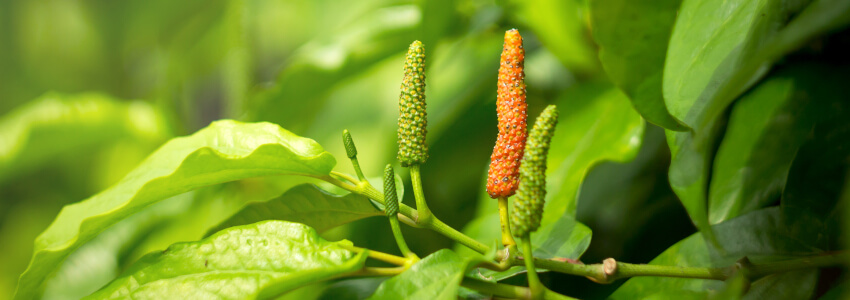Pepper alkaloid adds spice to SARS-Cov-2 antiviral research

A natural pepper compound could be broadly applied to treat different Covid-19 variants - both now and in the future.
According to a new study, piperlongumine (PL) was efficient both in vitro and in mouse studies against the alpha (B.1.1.7), delta (B.1.617.2), and omicron (B.1.1.529) versions of SARS-Cov-2.
As well as being effective against current Covid variants, PL could be significant in future antiviral responses – because it is a host directed antiviral (HDA) that induces a stress response in infected cells rather than working directly against the virus.
“This is quite advantageous because PL acts on the cells infected by the virus and not on the virus itself,” said study leader Gonçalo Bernardes, from Lisbon’s Instituto de Medicina Molecular and Cambridge University.
“(This makes) it a potential antiviral treatment that can be efficient in upcoming variants of SARS-CoV-2 or even different viruses, to fight future outbreaks.”
An alkaloid/imide extract from the long pepper plant used in Ayurvedic medicine, PL has also featured in cancer treatment studies, where researchers noted that it acted through inducing a stress response in host cells.
In their paper, published in ACS Central Science, the Bernardes group noted that HDAs were “believed to be more effective against SARS-CoV-2 variants of concern (than direct-acting antivirals, or DAAs) since host genes have a low propensity to mutate.” Since discovery of antiviral compounds to date had focused on DAAs such as remdesivir, paxlovid, and molnupiravir, a new study to investigate the true effectiveness of HDAs appeared particularly worthwhile.
After testing PL on two cell lines - VERO-CCL 81 and A549-hACE2 – the group found that “PL exhibits potent anti-SARS-CoV-2 activity, with low micromolar potency” and had the potential to be used in both prophylactic and therapeutic settings. They then used a transgenic mouse model of SARS-Cov-2 infection – employing K18-hACE2 mice - to establish that PL also exhibits ‘”robust” antiviral activity against the different variants in vivo. Additionally, PL outperformed plitidepsin – a promising antiviral that is currently undergoing human clinical trials, and which was used as a benchmark in the Bernardes research.
Another encouraging finding from the group’s in vivo mouse studies was that PL is particularly well-suited to nasal administration – a potentially efficient treatment route “because the nasal mucosa is frequently the primary site of infection in SARS-CoV-2.” The group were also able to show that intranasal administration was not toxic to mice at 1 mg/kg, and speculated that PL could eventually become a self-administered nasal drug for humans - “which would decrease the requirement for professional healthcare labor and increas(e) patient compliance.”
The group also discussed how the detailed focus of their research was on PL’s role in the selective Reactive Oxygen Species (ROS) induction of infected cells, writing: “Given that PL selectively kills cancer cells but not normal cells by inducing ROS, we investigated if PL could also selectively induce ROS in SARS-CoV-2 infected cells.”
“The antiviral effect of PL is shown to be directed by the selective accumulation of ROS in infected cells,” they added.
“By inhibiting the upregulated pi-class glutathione S-transferase (GSTP1) in infected cells, PL induces the increase of ROS levels and decreases reduced glutathione (GSH). Subsequent ROS-mediated activation of mitochondrial antiviral-signaling protein (MAVS) triggers the downstream IFN-JAK-STAT pathway, which in turn leads to viral degradation.
“As an HDA, PL does not target the virus directly but rather affects the ROS level selectively in infected cells, suggesting that PL has the potential to become a pan-SARS-CoV-2 therapeutic and would be useful against emerging SARS-CoV-2 VOCs (variants of concern).”
TRC and ATCC – for all your research chemical and drug discovery needs
TRC has more than 40 years’ experience working through some of the most complex synthetic pathways to deliver you high quality research chemicals. Our world-leading chemists engineer specific solutions for customers, and we have a uniquely large range - including many novel bioactive molecules for research into infectious diseases. The TRC portfolio also features hundreds of Covid-linked agents, encompassing repurposed drugs as well as novel research compounds.
You can also consult the ATCC Infectious Disease collection, the world’s largest biorepository, for an unparalleled selection of viral, bacterial and parasite strains, authenticated with ATCC's cutting edge genotypic, phenotypic and functional analysis. ATCC cell lines were used in this research.
|
